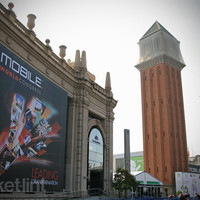It´s amazing what Nokia has done in a year. That was my primary impression from the first day of the show. Partly that´s because the first thing I did was attend the firm´s press conference. But mostly it´s because Stephen Elop has delivered what he promised to by accelerating Nokia´s execution to a point that would have been scarcely credible just a couple of years ago.
February 28, 2012

It´s amazing what Nokia has done in a year. That was my primary impression from the first day of the show. Partly that´s because the first thing I did was attend the firm´s press conference. But mostly it´s because Stephen Elop has delivered what he promised to by accelerating Nokia´s execution to a point that would have been scarcely credible just a couple of years ago.
The new phone announcements were by the by, really – although the 47 megapixel sensor on the Pure View cameraphone is technically impressive and the images they displayed blown up to giant proportions revealed astonishing detail. It didn´t impress everyone, though; the first question after the announcement was ¨why is the phone so bulky?¨That´s hardly the point. The Pure View is about technical accomplishment; it´s a statement of capability.
More impressive than the phones is the muscle that Nokia is throwing behind its service play. My favourite was Nokia Travel, a real time public transport information service that covers 500 cities. Turn by turn navigation to the nearest tube station, instructions on which line to use, which stop to get off at. That is a useful application.
But when basic data usage racks up a spend of £40 in a single day, as mine has, can anyone really afford to use such a service? The industry really needs to sort this out. That kind of pricing for a day´s tweeting, an email with a photo attached and a bit of browsing here and there is simply ludicrous. Fine when you´re charging it back, of course, but this is why everyone I know turns off data services when they holiday abroad. There´s got to be a better solution. I´m meeting some roaming specialists today so I´ll get their views.
I saw a couple of demos that were interesting on the Qualcomm stand. Last year we filmed the firm´s augmented reality demo, which you can see here. It was pretty crude and it´s fair to say that it required commitment and vision on the viewer´s part to buy into the potential. What a difference a year makes! The applications on the stand this year are on a different level altogether. Well get some footage this week and stitch the two pieces together so you can see how much it has come on, due largely to the enthusiasm that brands and marketing folks have developed for the new opportunities it offers.
The other thing I really liked was a gesture recognition interface on a tablet that used an ultrasound stylus which was triangulated by three microphones on the tablet´s bezel. Very clever indeed.
Anecdote of the day definitely goes to WeDo Consulting. They are concerned that new areas of operation like M2M and mobile financial services will increase operators´risk exposure enormously and they illustrated that with a story about SIM-enabled traffic lights in South Africa. It was a great idea to connect the lights so that the traffic management authorities could be alerted to any malfunction. But why on earth were the SIMs provisioned to be able to do voice? Entrepreneurial crims broke all the traffic lights open, nicked the SIM cards and started using them to make voice calls. You have to admire that kind of thinking.
About the Author(s)
You May Also Like








.png?width=300&auto=webp&quality=80&disable=upscale)


_1.jpg?width=300&auto=webp&quality=80&disable=upscale)


.png?width=800&auto=webp&quality=80&disable=upscale)